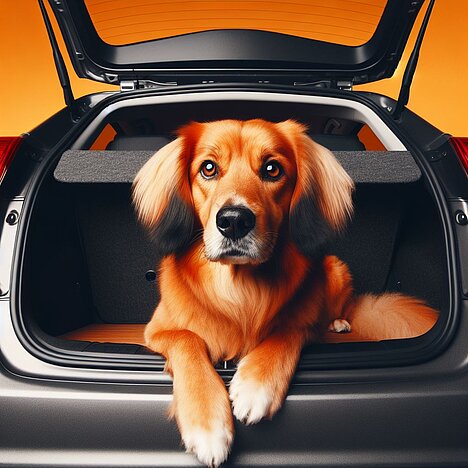Kinetosis

Kinetosis, also known as motion sickness, is a common condition in dogs that is associated with nausea, vomiting and discomfort. It occurs when the balance organ in the inner ear and the eyes receive conflicting signals about the movement of the body. This can happen, for example, when your dog is in a car, train or airplane.
Causes and risk factors for kinetosis in dogs
The exact causes of kinetosis in dogs are not fully understood, but there are some factors that can increase the risk:
- Young age: puppies and young dogs are more susceptible to kinetosis because their vestibular system is not yet fully mature. However, they can also overcome motion sickness over time if they have positive experiences with driving.
- Fear and stress: Dogs that are afraid of driving or have negative associations with it, such as visits to the vet or moving house, are more likely to suffer from kinetosis. The anxiety exacerbates the symptoms of nausea and can lead to a vicious cycle.
- Genetics: Some dog breeds may be more susceptible to kinetosis than others. These include, for example, large breeds with long ears, such as Basset Hounds or Cocker Spaniels.
- Food intake : If your dog has eaten just before the journey or is given treats during the journey, this can stimulate their gastrointestinal movements and lead to nausea.
Symptoms and signs of kinetosis in dogs
Symptoms of kinetosis in dogs can vary depending on the severity, but some typical signs include
- Vomiting or retching
- Salivation or foaming at the mouth
- Panting or trembling
- Restlessness or whimpering
- Withdrawal or hiding
- Loss of appetite or thirst
If you notice these symptoms in your dog, you should interrupt or end the journey if possible. Take your dog to a quiet place where he can rest. Offer him water but no food until he feels better.
Prevention and treatment of kinetosis in dogs
There are some measures you can take to prevent or alleviate kinetosis in your dog. Here are some tips:
- Gradually get your dog used to driving. Start with short rides to pleasant destinations, such as a park or playground. Praise and reward your dog for calm behavior. Gradually increase the duration and frequency of the rides.
- Avoid feeding your dog before or during the ride. Instead, give him a light meal about three hours before departure. Avoid giving treats or chews during the journey.
- Ensure good ventilation in the car. Open a window or switch on the air conditioning to provide fresh air. Avoid strong odors such as perfume or smoke.
- Securely fasten your dog in a transport box or with a harness in the back seat. This gives him security and prevents him from moving around freely in the car. The crate should be large enough for your dog to turn around in.
- Let your dog look out of the window or offer him a toy to distract him. However, avoid over-stimulating or annoying him.
- Take regular breaks during the journey. Let your dog get out, loosen up and move around. This will help stimulate his circulation and reduce his nausea.
- Talk to your vet about possible medications or natural remedies for kinetosis. There are various options, such as antihistamines, antiemetics or herbal supplements, which can help your dog tolerate the trip better. However, always pay attention to the dosage and side effects and ask your vet for advice before giving your dog anything.
Kinetosis in dogs is not a serious condition, but it can be very unpleasant for your dog.
The authors assume that a veterinarian should be consulted if an animal is ill and that medication should only be taken after consultation with a doctor or pharmacist. Only an individual examination can lead to a diagnosis and treatment decision.
We help you find the nearest vet → This way